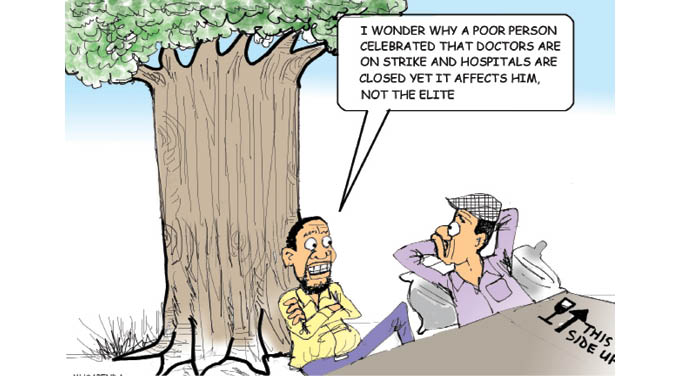Letters to the Editor: The missing link in Zim education

Monica Cheru, Correspondent
Young, uneducated, with no independent income and pregnant. That is probably the worst nightmare of every parent and guardian who has a female minor to raise.
Dropping out of school is almost a certainty. The young female is also at risk from sexual infections, pregnancy complications and likely to fall into abusive relationships.
But the enormity of the challenge of that situation does not seem to strike young Zimbabwean females whose fertility is a worrying 120 per 1 000 against a global average of 50 per 1 000 according to the National Fertility Study of 2014.
That means more than 10 percent of all girls raised in Zimbabwe are likely to have a child by the age of 19 while they are still going through their basic education.
For most girls this is not just an interruption of education and a deferment of future aspirations, but a total cut off and a condemnation to a vicious poverty and abuse cycle. They cannot continue with their education because of stigma and colonial school policies.
The Education Amendment Bill gazetted earlier this year will address policy issues of ensuring the girls who fall pregnant can stay in school. But without proper social support systems, it will be just another great initiative on paper that does not translate to effective change on the ground.
This is a case where prevention is better than cure as it is better to prevent teen pregnancies than to dry and deal with consequences later.
According to the National Fertility Study there are several factors that influence teen pregnancy rates. Among these are economic factors whereby the lower income demographic groups in the low income countries are among the worst affected.
What is interesting is that rural teens have higher fertility rates at 143 per 1000 compared to 75 per 1000 for their urban counterparts. In addition, access to mainstream media in the form of newspapers, radio and TV emerged as a significant factor with those who have low access falling in the highest risk groups.
But on the flip side access to the internet also apparently raises the risk of teen pregnancy. It is possible that this is because the internet is full of pornographic and generic material that glorifies sex without highlighting the down side.
The study also highlights that fertility rates in Zimbabwean women above the age of 20 is significantly lower than in teenager.
Analysing all factors studied, the picture painted shows that lack of empowering facts to make informed decisions is the possibly the biggest driver of high teen pregnancies in Zimbabwe.
While parents and social institutions like the church can play a role in education young people about reproductive health, the school is the primary source of education and the place where they spend the most time.
There is also the matter of role models and home culture. Females from apostolic sects and those with female relatives who became pregnant as teens are at higher risk compared to other groups. Therefore, it is in school that reproductive health and life skills must be taught. The school is a neutral centre where both males and females can be taught to be responsible for their sexual and reproductive health. The school must equip all learners with life skills and not to engage in sex.
Currently many schools pay a nod to life skills education through some form of guidance and counselling sessions. But these are generally taken from a moralistic point of view reflecting the teacher’s own views, or what they perceive as what is acceptable to the parents.
Gender stereotyping is rampant with responsibility for sexual reproduction being placed squarely on the female child. Stigma is also terrible in schools with pregnant girls shamed and ostracised. There is no practical and frank talk on health, social and economic risks associated with early sexual debuts.
At a stunning 54 percent, the high number of teens who reported sexual abuse in the study shows that some of the teen pregnancies are a result of criminal activity. Sound education will ensure timely interventions to prevent further assault and also bring the culprits to book, which will hopefully help deter other potential sex offenders against minors.
The Education Amendment Bill says that there should qualified dedicated personnel in schools to tackle adolescent sexual and reproductive health. This is the way to go and this programme should have an action plan initiated as soon as possible.
Priority of mainstreaming reproductive health and life skills must be considered from an economic point of view. What is the cost of allowing unchecked teen pregnancies in a country with an increasingly young population?
As a country we already have challenges with ensuring basic human rights in the form of universal access to health services, clean water, adequate food, education, housing and other amenities. A population boom will only exacerbate the situation.
Analysing all factors studied, the picture painted shows that lack of empowering facts to make informed decisions is the possibly the biggest driver of high teen pregnancies in Zimbabwe










Comments